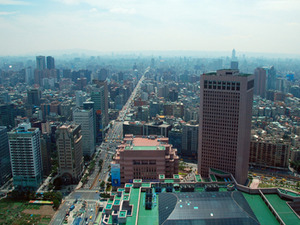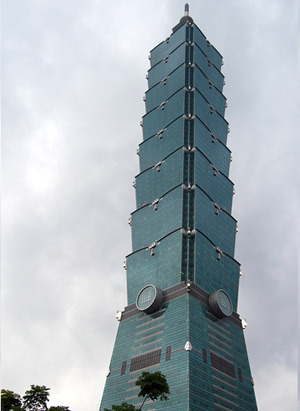What's Taipei like?
For years after losing the civil war, the KMT regarded Taipei as only a temporary home (on the basis that they'd be headed back to mainland China) and ruled autocratically. Mix this disdain for the present with a rapidly growing economy and it’s not surprising that large parts of Taipei ended up comprising piles and sprawls of densely packed concrete buildings.That said, it’s also a well off city, and since the late 1980s, has been rapidly modernised, so there’s an underground system which puts London’s to shame (not hard, admittedly), plenty of eye-catching modern architecture, swish shopping malls and, in Taipei 101, the world’s tallest building (see below). Taipei was also one of the world's first cities to invest in large-scale municipal Wi-Fi, with WiFly launching in 2006.
It’s a busy city, too, with crammed streets, temples squeezed between shops, and the shops sometimes taking over the pavement. It’s a 24-hour place, with the endless 7-11 convenience stores ensuring you can buy bottles of ice tea and Hello Kitty tat whenever you feel the need.
Like many other Far East cities, Taipei a multi-level place – it’s not uncommon to get to an address, look around, and realise that the restaurant or bar you’re looking for is several floors up. The overwhelming impression is one of bustle and business, which combined with the often hot and humid weather, makes it an intense place to be.


Taipei, as seen from the 36th floor of Taipei 101
This is particularly the feeling you get if take a Taxi from the airport into town as you’re immediately thrust into a seething, weaving mix of scooters, cars and other taxis, many of which seem to be driven by people who’ve learned to drive using Need For Speed as a training simulation.
Taipei 101, The World's Tallest Building
 Since 2004, Taipei has been home to the world’s tallest building, Taipei 101. It rises 1,671 feet into the sky. Reaching this height in concrete is difficult, but if you add in the fact that Taipei suffers from both typhoons and earthquakes, then, as an architect, you’ve got some serious thinking to do.
Since 2004, Taipei has been home to the world’s tallest building, Taipei 101. It rises 1,671 feet into the sky. Reaching this height in concrete is difficult, but if you add in the fact that Taipei suffers from both typhoons and earthquakes, then, as an architect, you’ve got some serious thinking to do. Conventional wisdom holds that the high winds of typhoons should usually be dealt with by making a tall building very rigid – but that to make a building as earthquake-proof as possible, it needs to sway.
The answers for Taipei 101 were massive foundations and a clever structure, so it’s built on 380 concrete piles, driven 80 metres into the ground to make it stable, and has a series of ‘tuned mass dampers’ – giant steel counterweights.
These suspended steel spheres – the largest of which weighs 730 tons – give the structure a degree of pliancy which protects it against earthquakes above seven on the Richter scale. They counteract the shockwaves from an earthquake by absorbing the swaying motion generated tremors in the ground send into the building’s frame.
The inside of the building is just as technically awesome. The elevators’ ascension speed of 37mph is so rapid it makes your ears pop, and the counter-weights move so rapidly they have to be specially shielded so they don’t make too much noise as they shoot up and down the lift shafts.
Taipei 101’s website claims the design integrates many traditional Chinese motifs – built in eight sections, because eight is a lucky number, and it’s designed to resemble a stalk of bamboo, and constructed with excellent feng shui in mind.
Once you’re at the top, this all falls away. The view is staggering. The building is so tall, the rest of the city looks flat, like a texture in a game.

MSI MPG Velox 100R Chassis Review
October 14 2021 | 15:04









Want to comment? Please log in.